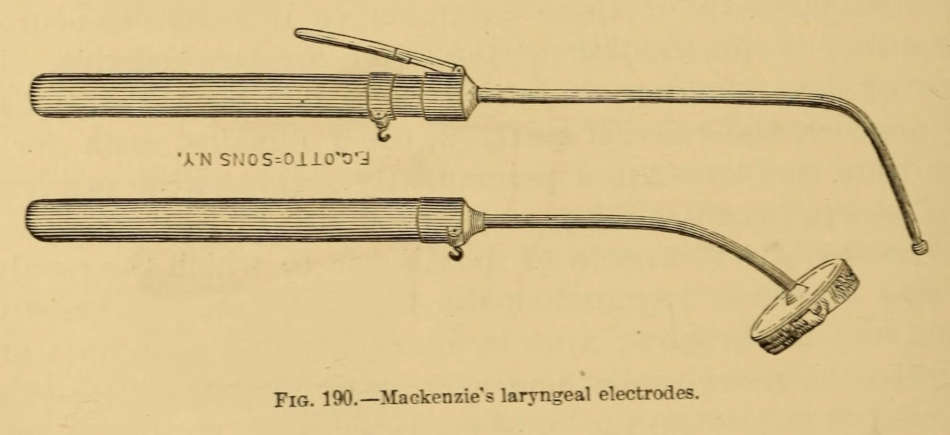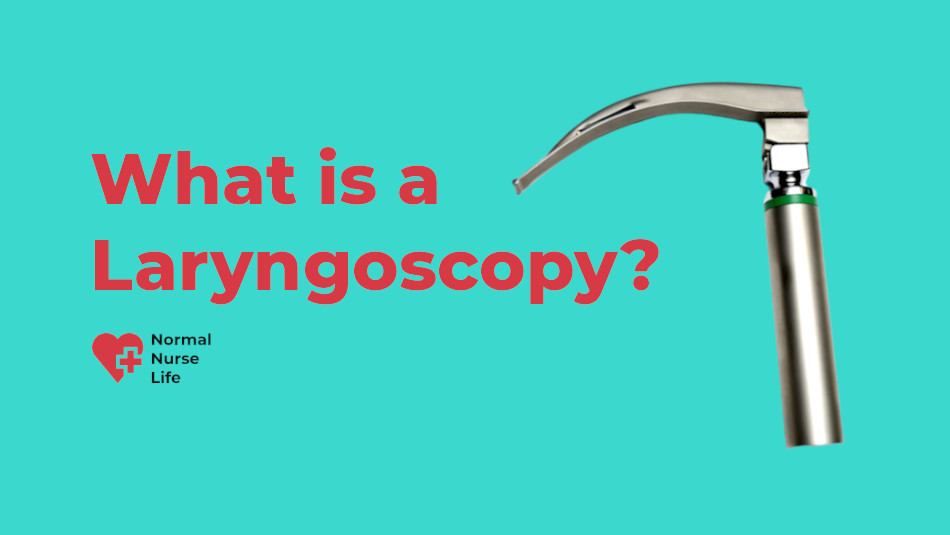Let us start by knowing what a larynx is. The larynx is also called the ‘voice box’, and it is the organ that is located at your trachea’s top or windpipe.
The larynx is involved in multiple functions such as breathing, protection of the trachea, and most importantly producing sound.
Larynx includes the vocal folds or cords and manipulates the volume and pitch required for phonation.
The larynx contains the vocal cords, which makes sounds when you speak, by vibrating.
In simple terms, without larynx, we cannot talk to other people. In addition to that, the larynx also helps you in swallowing and breathing.
To look or examine the larynx and its surrounding areas, a small hand tool is used known as a laryngoscope.
In this post, you will know what is a laryngoscopy, its use, procedure, and types.
Table of Contents
What is a laryngoscopy?
Laryngoscopy can be defined as the visual examination of the larynx using a throat scope.
With the throat scope, the doctor can see below the throat’s back where the larynx and the vocal cords are located.
Laryngoscopy is used for various reasons and can be used to discover the reason behind pain in the throat or ear, blockages in the airway, difficulty in swallowing or narrowing of your throat, also called strictures or stenosis.
See also: Nursing Care Plan for COPD Ineffective Airway Clearance
In addition to that, there are many other conditions that require laryngoscopy, such as:
- A bloody cough
- Consistent or unexplained bad breath
- Persistent coughing
- A weak voice, hoarse voice or no voice
- A lump in the neck or head
What is a laryngoscope used for?
A laryngoscope is designed to visualize the vocal cords as well as to place the ETT into the trachea under a direct vision.
A laryngoscope is used to find out the cause of multiple conditions or discomfort.
For example, you may be suffering from a sore throat that won’t just go away or an ongoing condition that is persistent and troubling you for a long time such as hoarseness in voice, coughing, or bad breath.
The doctor might also do a laryngoscope test when a patient comes in complaining about feeling as if something is stuck in his or her throat, trouble swallowing or breathing, a nagging earache that is persistent or there are symptoms related to serious diseases like cancer.
See also: Nursing Care Plan for Dysphagia
In simple words, the laryngoscope is used for examination and finding out if there is something that is affecting the larynx that needs urgent medical attention.
Based on the findings of the laryngoscopy, the treatment is determined.
The laryngoscope is not just useful in cases of adult complaining about the mentioned conditions or difficulties; it is now being used in cases of newborn babies as well.
It is used if the doctor suspects the baby is struggling with breathing or observes any sign of a problem related to larynx, ear or throat.
The laryngoscopes are used for laryngoscopy, and it is important to understand how it is used. A laryngoscope is generally a left-handed tool that is designed to help in visualizing of a person’s larynx.
The common type of blades used for laryngoscopes is the straight Miller and curved Macintosh blades.

The curved Macintosh blades can be easily inserted into the vallecula.
On the other hand, the Miller blades are used to simply lift the epiglottis and view the larynx. Short handles are also used for female and obese patients.
What is a laryngoscopy procedure?
When you experience the mentioned conditions previously, then you should see your local specialist or a physician.
The doctor will try to understand first by listening to what you have been experiencing and recommend a laryngoscopy.
The laryngoscopy has different procedures, and the doctor will advise the best one for you.
The laryngoscopy has three types of procedures, which are designed for different scenarios.
The doctor will decide and recommend any of the three types of laryngoscopy procedures, which are direct laryngoscopy, direct fiber-optic laryngoscopy, and indirect laryngoscopy.
Let us understand more about the three types of laryngoscopy procedures.
What is a direct laryngyscopy?
The direct laryngoscopy is done with the general anaesthesia where the specialist uses the laryngoscope for pushing down the tongue and lifting the epiglottis up.
The flap of cartilage, which covers the windpipe, is called the epiglottis.
The doctor may also use this procedure for the removal of any small growths, collect tissue samples for future testing or for the removal of polyps from the vocal cords.
The direct laryngoscopy is sometimes done in an emergency or urgent situation where the doctor inserts a tube into the patient’s windpipe for breathing while the doctor conducts the surgery.
Indirect laryngoscopy, laser or a microscope is usually used for the examination of the larynx and its parts.
Doctors commonly advise patients who are scheduled to undergo direct laryngoscopy to avoid eating or drinking for eight hours before the procedure.
After a direct laryngoscopy, a patient usually feels a swollen throat for 2 to 5 days and may also sound hoarse for up to 8 weeks.
Doctors usually advise the patient to limit his or her speech for one or two weeks.
Patients are advised to avoid raising voice or shouting and instead try to speak with minimal sound so that the vocal cords can heal fast.
The doctors provide medical guidelines to post the direct laryngoscopy to ensure that the vocal cords are not strained due to the carelessness of the patient.
Direct fiber-optic laryngoscopy
The direct fibre-optic laryngoscopy is possibly the most popular and common laryngoscopy procedure.
It is also known as flexible laryngoscopy and involves a very small telescope located at the cable’s end.
This cable with the telescope is inserted through the nose and then down the patient’s throat.
The procedure of direct fibre-optic laryngoscopy takes about 10 minutes. To make the procedure easier, numbing medication is usually applied on and inside the nose.
As the name suggests, direct fiber-optic laryngoscopy is flexible and helps the doctor understand the situation better, and that is the reason behind its popularity.
The flexible cable with the telescope offers a precise manipulation, which gives the doctor or the specialist a complete view of the vocal cords’ motion.
In addition to that, the Direct fiber-optic laryngoscopy uses an endoscope that is thin and flexible, and that is why the patient would experience no or minimal discomfort.
Further, with the direct fibre-optic laryngoscopy, the patient can recover easily and fast.
However, the patients may feel their throat a little swollen and a bitter aftertaste, especially while eating.
Nevertheless, with the direct fiber-optic laryngoscopy, the symptoms and aftereffects are short-lived.
Indirect laryngoscopy
The simplest type of laryngoscopy is the indirect laryngoscopy and doctors can perform it while the patient is still awake.
However, in a few cases, numbing medication is administered to numb the throat area. Doctors use light and a small mirror to observe the insides of the patient’s throat.
The mirror used in the indirect laryngoscopy usually has long handles, which helps the doctors to place the mirror safely against the patient’s mouth roof.
The doctor then shines the light on the patient’s mouth to observe the image on the mirror.
The indirect laryngoscopy procedure requires the patient to sit straight up and lean forward while keeping the back straight. It is not a long process.
With indirect laryngoscopy procedure, patients may also receive an oral or nasal laryngoscopy.

The nasal laryngoscopy will involve a flexible scope, which will be placed inside the patient’s nostrils and then the scope moves through the nose and then into the throat’s back to show the pharynx, larynx, and tongue.
For the oral procedures, the scope will be placed inside the mouth and move it past the patient’s tongue and teeth.
Since the indirect laryngoscopy is not as invasive as the other procedures, patients will experience minimal or no discomfort while the procedure is ongoing.
In some cases, the doctor may ask the patients to get X-rays or imaging tests before the procedure. The doctor sometimes gives the patients liquid called barium while taking the X-rays of the larynx and esophagus.
Post direct laryngoscopy, patients are advised not to eat or drink anything for some time. Doctors may also ask the patient to stop certain medications.
Related articles of ours:
If a patient complains of pain after the laryngoscopy procedure, the doctor may prescribe throat lozenges or OTC pain relievers.
Laryngoscopy results
Once the inspection of the larynx, throat, and mouth is over, the doctor or specialist will note down abnormalities or anything and show the video to the patient.
After the doctor has taken fluid or tissue samples, these samples will be given to labs, and the results will be given in 1 or 2 weeks.
The larynx’s visualization usually helps in the definitive diagnosis or ruling out disorders. The doctor will recommend medication, speech therapy, or/and surgery based on the visualization of the larynx.
Possible complications
Just like any other procedures, the laryngoscopy procedures can also have potential complications.
Although the complications are not common and very rare, patients should know about them nevertheless.
The common complications are as follows:
- Swelling in the patient’s throat, tongue or mouth
- Vomiting or gagging
- Infection
- Hoarseness
- Bleeding
Conclusion: What is a laryngoscopy?
Before going for the procedure, it is always a good idea to know what is a laryngoscopy and how it works.
As you know that laryngoscopy is a pretty common examination performed by doctors or specialists.
With the laryngoscopy, the doctor gets a close-up and clear view of a patient’s throat and larynx.
It is a process that can solve many issues related to the throat, ear, larynx, and other surrounding parts.
Now that you know what is a laryngoscopy, here is a couple related articles of ours:
I’d also appreciate if you could give this article a star rating. Thank you in advance!
